Watch the video animation of the Ancient Maya myth Popol Vuh or “Council Book,” featuring the epic mythological stories of Hero Twins confronting the Lords of Death and Disease in the underworld caves of the “Place of Awe.”
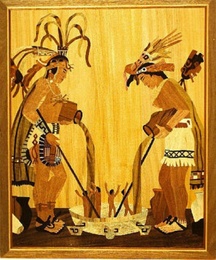

Popol Vuh: The Ancient Maya Book of the Dawn of Life and the Glories of Gods and Kings
The Popol Vuh (K’iche’ for “Council Book” or “Book of the Community”), written in the Classical K’iche’ (or Quiché) language, contains mytho-historical narratives of the Post-Classic K’iche’ Maya kingdom of highland Guatemala. The book features a creation myth, the Dawn of Life under the spectre of a flooded world, followed by the epic mythological stories of two Hero Twins: Hunahpu (Blow-gun Hunter) and Xbalanque (Young Hidden/Jaguar-Sun). The second part of the book deals with details of the foundation and history of the K’iche’ kingdom, tying in the royal family with the legendary gods in order to assert rule by divine right.
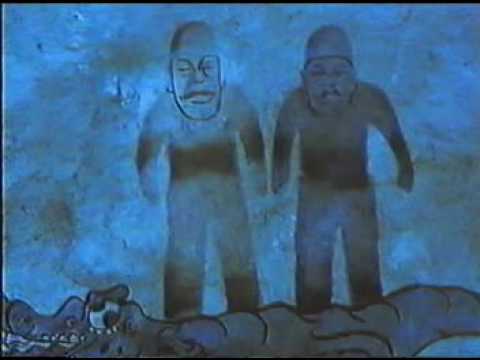
Watch this video on YouTube
Popol Vuh, the creation myth of the Maya, animated in 1988 from paintings on pottery. Conceived, produced, directed, and written by Patricia Amlin. Animation by Patricia Amlin, Joanne Corso, Martha Corzycka and Bud Luckey. Narrated by Larry George of the Yakima Nation. Voices by Teatro Campesino. Music by Tod Boekilheide, Xochimoki, Mazatl Galindo and Jim Berenholtz. 60 minutes.
THIS IS THE ACCOUNT of when all is still silent and placid. All is silent and calm. Hushed and empty is the womb of the sky.
THESE, then, are the first words, the first speech. There is not yet one person, one animal, bird, fish, crab, tree, rock, hollow, canyon, meadow, or forest. All alone the sky exists. The face of the earth has not yet appeared. Alone lies the expanse of the sea, along with the womb of all the sky. There is not yet anything gathered together. All is at rest. Nothing stirs. All is languid, at rest in the sky. There is not yet anything standing erect. Only the expanse of the water, only the tranquil sea lies alone. There is not yet anything that might exist. All lies placid and silent in the darkness, in the night.
All alone are the Framer and the Shaper, Sovereign and Quetzal Serpent, They Who Have Borne Children and They Who Have Begotten Sons. Luminous they are in the water, wrapped in quetzal feathers and cotinga feathers. (Popol Vuh, pp. 67-69, A.J. Chrsitenson)
Though written in the Latin alphabet, it is thought to have been based on a Maya codex in hieroglyphic script. The original manuscript, written by members of the K’iche’ Maya aristocracy at the fall of their capital city (Cumarcah/Utatlan) around 1550, has been lost. However, another handwritten copy made by the Friar Francisco Ximénez in the early 18th century exists today in the Newberry Library in Chicago. At the time, the Catholic missionaries had undertaken to burn all surviving religious hieroglyphs and texts. Consider Fr. Diego de Landa who burned hundreds of ancient Maya books while serving as the bishop at Maní in northern Yucatán:
We found a large number of books of these characters, and as they contained nothing in which there were not to be seen superstition and lies of the devil, we burned them all, which they regretted to an amazing degree and which caused them much affliction. (Landa 1941, 78)
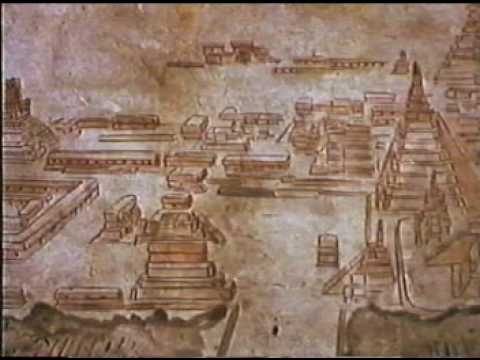
Watch this video on YouTube
Sacred Texts of the K’iche’ Maya: Guide for Divination, Enlightenment and Immortality
Dennis Tedlock, who wrote what I consider the most definitive translation of the Popol Vuh, characterized his task as thus:
My work took me not only into dark corners of libraries but into the forests and tall cornfields and smoky houses of highland Guatemala, where the people who speak and walk and work in the pages of the Popol Vuh, the Quiche Maya, have hundreds of thousands of descendants. Among them are diviners called “daykeepers,” who know how to interpret illnesses, omens, dreams, messages given by sensations internal to their own bodies, and the multiple rhythms of time. It is their business to bring what is dark into “white clarity,” just as the gods of the Popol Vuh first brought the world itself to light.
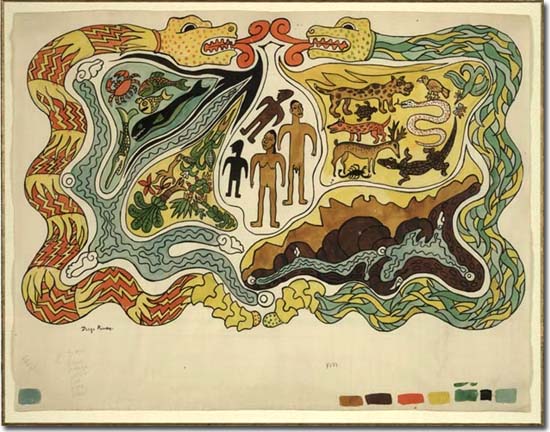

From Dennis Tedlock on the astronomic and divinatory nature of the Popol Vuh, and how it must be performed to illustrate the cosmology of the Maya vision:
If the ancient Popol Vuh was like the surviving hieroglyphic books, it contained systematic accounts of cycles in astronomical and earthly events that served as a complex navigation system for those who wished to see and move beyond the present.
In the case of a section dealing with the planet Venus, for example, there would have been tables of rising and setting dates, pictures of the attendant gods, and brief texts outlining what these gods did when they established the pattern for the movements of Venus. When the ancient reader of the Popol Vuh took the role of a diviner and astronomer, seeking the proper date for a ceremony or a momentous political act, we may guess that he looked up a specific passage, pondered its meaning, and rendered an opinion.
But the authors of the alphabetic Popol Vuh tell us that there were also occasions on which the reader offered “a long performance and account” whose subject was the emergence of the whole cahuleu or “sky-earth,” which is the Quiche way of saying “world.” If a divinatory reading or pondering was a way of recovering the depth of vision enjoyed by the first four humans, a “long performance,” in which the reader may well have covered every major subject in the entire book, was a way of recovering the full cosmic sweep of that vision.
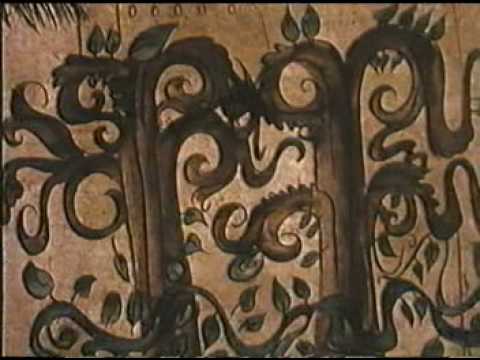
Watch this video on YouTube
Hunahpú — the civilizing hero of Quiché-Maya culture — is a redemptor-god, son of the Supreme Being. He is born immaculately like all the great religious founders and sacrifices himself for humanity, many centuries before the towering figure of Jesus the Christ becomes outlined in the panorama of human history. Hunahpú proclaims the tenet of the soul’s immortality before Plato taught his doctrines, when the Greek mythology created by Homer and Hesiod did not yet exist. Hunahpú and Ixbalamqué transform themselves into human beings, have the same substance and experience the same life that man does, in order to establish the latter’s patterns of conduct.
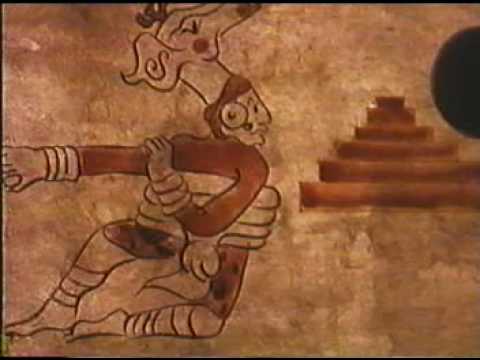
Watch this video on YouTube
Xibalba: On Succumbing to the Evil Lords in the “Place of Awe”
The story tells of a first trip of the father of the Hero Twins, One Hunahpú (also “One Master of the Blowgun”) and his brother, into the eastern wildlands (present day Alta Verapaz, Guatemala), a place of thirteen sacred peaks with uncountable underground chasms, caves, rivers flowing into nowhere, pools deep within the earth. Here lies Xibalba, the “Place of Awe (Fear),” or Underworld, ruled by twelve Lords of Death and Disease.
Dennis Tedlock: The ball court of One and Seven Hunahpú (the forebears of the Hero Twins) lies on the eastern edge of the earth’s surface at a place called Great Abyss at Carchah (San Pedro Carcha in Alta Verapaz). Their ballplaying offends the lords of Xibalba, who dislike hearing noises above their subterranean domain. The head lords are named One Death and Seven Death, and under them are other lords who specialize in causing such maladies as lesions, jaundice, emaciation, edema, stabbing pains, and sudden death from vomiting blood. One and Seven Death decide to challenge One and Seven Hunahpú to come play ball in the court of Xibalba, which lies at the western edge of the underworld.
The way is full of traps, but they do well until they come to the Crossroads, where each of four roads has a different color corresponding to a different direction. They choose the Black Road, which means, at the terrestrial level, that their journey through the underworld will take them from east to west. At the celestial level, it means that they were last seen in the black cleft of the Milky Way when they descended below the eastern horizon; to this day the cleft is called the Road of Xibalba.
Failing a series of tests put on by the Lords, they sacrifice them the next day instead of playing ball. Both are buried at the Place of Ball Game Sacrifice, except that the severed head of One Hunahpu is placed in the fork of a tree that stands by the road there. Now, for the first time, the tree bears fruit, and it becomes difficult to tell the head from the fruit. This is the origin of the calabash tree, whose fruit is the size and shape of a human head.3
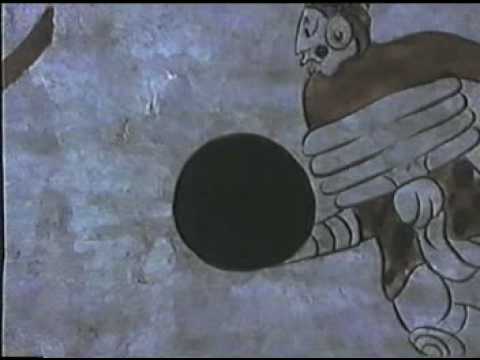
Watch this video on YouTube
The Hero Twins: Overcoming Seven Macaw
Hunahpú and Xbalanque, born magically from the calabash had-skull of One Hunahpú and Blood Woman (or Moon), daughter of one of the Lords. Thus, Hurricane or Heart of Sky sends the twins to kill pretenders to lordly power over the affairs of the earth, a father and two sons. First vanquished is the father, named Seven Macaw (Itzam-Yeh), who claims to be both the sun and moon.
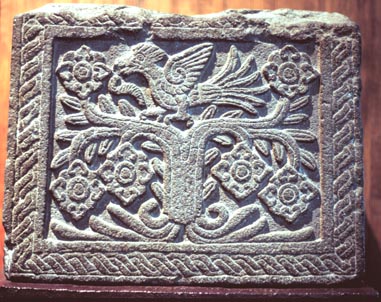

This is the great tree of Seven Macaw, a nance, and this is the food of Seven Macaw. In order to eat the fruit of the nance he goes up the tree every day. Since Hunahpu and Xbalanque have seen where he feeds, they are now hiding beneath the tree of Seven Macaw, they are keeping quiet here, the two boys are in the leaves of the tree. [Popol Vuh]
From Dennis Tedlock: His career as lordly being ended, he remains as the seven stars of the Big Dipper, and his wife, named Chimalmat, corresponds to the Little Dipper. The rising of Seven Macaw (in mid-October) now marks the coming of the dry season, and his fall to Earth and his disappearance (beginning in mid-July) signal the beginning of the hurricane season. It was his first fall, brought on by the blowgun shot of Hunahpú and Xbalanque, that opened the way for the great flood that brought down the wooden people. Just as Seven Macaw only pretended to be the sun and moon, so the wooden people only pretended to be human.
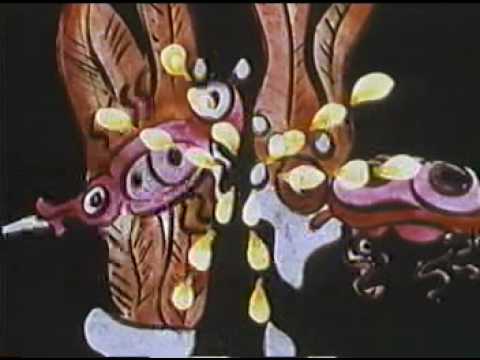
Watch this video on YouTube
Redemption in the Underworld, from the Lords of Death and Disease
Following in the footsteps of their father, the Hero Twins descend the road to Xibalba, but look to outwit the Lords by secretly learning their names and not falling victim to the numerous tests that their father succumbed to. The next day Hunahpú and Xbalanque play ball with the Xibalbans, something their father and uncle did not survive long enough to do.
From AJ Cristenson: Contemporary Quichés also believe that illness is caused by various underworld lords. The following is from a prayer for protection in which the lords of illness and death are invoked and propitiated with offerings at a shrine in the cemetery at Chichicastenango. Among these are the “lord of sickness and pain, of death and destruction in the roads and trails, of death and destruction through aguardiente (liquor) and destruction from food poisoning, of death and destruction from vomiting, of death and destruction from strain and exertion—come hither, be seated before this World of the cemetery!”
The battle between the Hero Twins and the Evil Lords is long and drawn out, and is characterized by the following exchange from the AJ Christenson translation:
Thus the boys entered into Blade House, the second trial of Xibalba. Here it was desired that they would be sliced apart by the blades. They were to have died quickly in their hearts. But they did not die. They spoke to the blades, instructing them in this way: “Yours shall be the flesh of animals,” they said to the blades. Thus they stopped moving. As one they all lowered the points of their blades.
And while they were passing the night in Blade House, they called out to all the ants: “Cutting ants, conquering ants, come! Go and get flower blossoms as prizes for the lords.” “Very well,” they said.
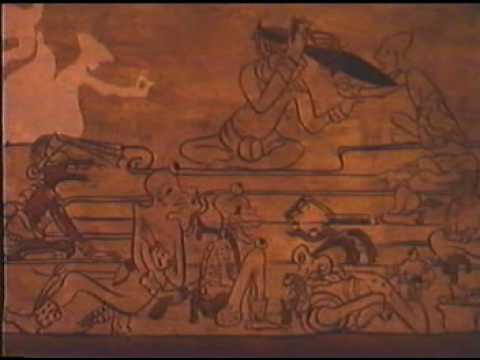
Watch this video on YouTube
A. J. Christenson: Popol Vuh: Sacred Book of the Ancient Maya
Updated 2 February 2021

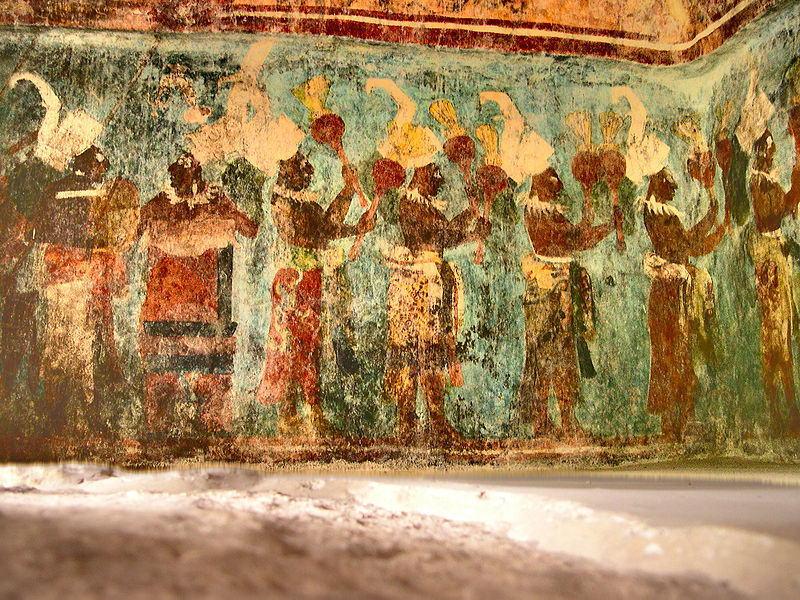

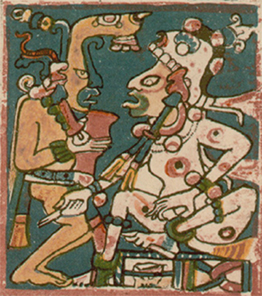
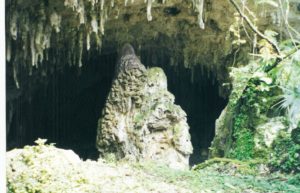







Pingback: Stories of a Maya Rebirth: Heart of Sky, Heart of Earth | WilderUtopia.com
Pingback: Howler Monkeys Among the Maya: Divine Patrons to the Artisans | WilderUtopia.com
Pingback: Maya Ruins at Tikal: A New Beginning at Winter Solstice | WilderUtopia.com
the film clips don’t work…JUST SHOW A BLACK SQUARE? WHY?
I’m seeing them in my browser. Here is another link to find Part One…
http://youtu.be/_1nYh0rumiY
Pingback: Page 21. | POPOL WUJ
Pingback: Aztec Myth: Quetzalcoatl Descends into Land of the Dead | WilderUtopia.com
Pingback: Traditional Healing among the Highland Maya | WilderUtopia.com
Pingback: Volcanoes and Vibrant Colors of Antigua Guatemala | WilderUtopia.com
Pingback: Ch´ol Creation Story: The Origin of Life on Earth
Pingback: Diego Rivera and the Fall and Rise of Detroit
Pingback: Sacred Cenotes of the Yucatán Maya Underworld - WilderUtopia
La arquitectura maya y su cultura en general es exepcional! 🙂